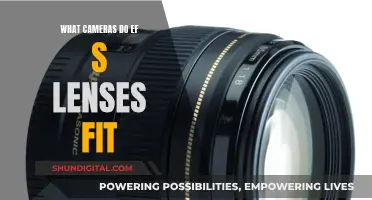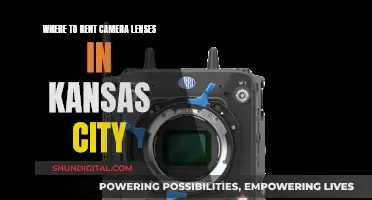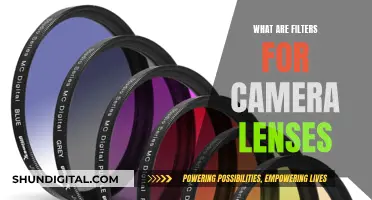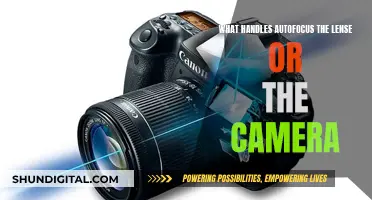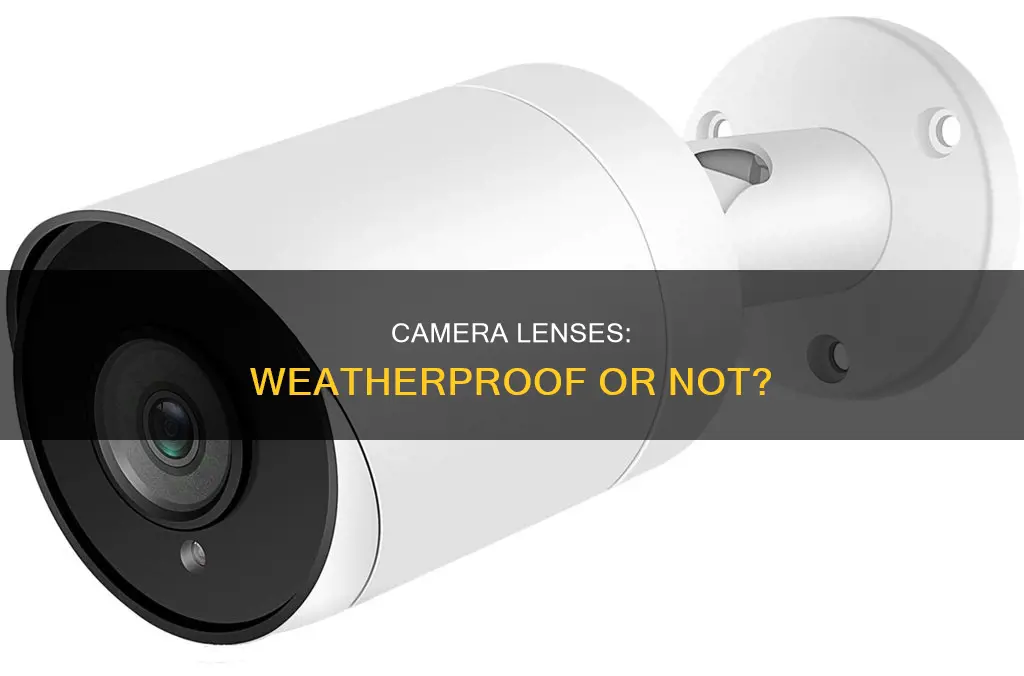
Camera lenses are not all created equal when it comes to weather protection. While some lenses are fully waterproof and can be submerged in water, most are only weather sealed or weather resistant, offering varying levels of protection from the elements. So, what's the difference between a weatherproof and a waterproof lens, and how do you know if your camera gear can handle harsh weather conditions?
| Characteristics | Values |
|---|---|
| Purpose | To protect camera lenses from harsh weather conditions |
| Protection | Not entirely waterproof, but weather sealing on most lenses allows them to withstand harsh weather conditions |
| Weather Sealing | Rubber gaskets protect vulnerable points where water can enter the camera |
| IPX Rating | Specifies how much water exposure lenses can withstand |
| Weatherproof vs. Waterproof | Weatherproof lenses have limited protection against running water, dust, and other elements |
| Weather Sealed vs. Water-Resistant vs. Waterproof | Weather-sealed lenses are not fully waterproof and may not withstand heavy rain or immersion in water |
| Water-Resistant | Can handle drizzles or splashes of water but not fully waterproof |
| Weather Sealing Effectiveness | Varies from camera to camera, with some offering more protection than others |
| Condensation | Weather sealing does not prevent condensation, which can occur due to temperature changes |
| Risk of Damage | Using a non-weather-sealed lens on a weather-sealed camera body can put both the lens and body at risk of damage |
What You'll Learn

Weather-sealed lenses need a weather-sealed camera body to be effective
Weather-sealed lenses are an excellent investment for photographers who want to continue shooting in harsh weather conditions. However, it is important to note that weather-sealed lenses need a weather-sealed camera body to be fully effective.
Weather-sealed lenses are designed to protect the camera from water, dust, and other elements. They are usually sealed with rubber gaskets that cover vulnerable points, such as the rear of the lens where it joins the camera mount. While these seals offer protection, they are not foolproof, and water or dust can still penetrate the camera if the camera body is not also weather-sealed.
The lens mount is a significant opening on the camera body, and if it is not weather-sealed, dust and moisture can make their way into the lens mount and potentially the sensor. This can result in damage to both the lens and the camera body.
Additionally, zoom lenses are more challenging to protect than prime lenses due to their complex optical design. As the lens telescopes in and out, protective elements can be compromised, and many lenses also intake air as they zoom, allowing dust and moisture to enter.
Therefore, to ensure maximum protection for your photography equipment, it is essential to pair weather-sealed lenses with a weather-sealed camera body. This combination will provide you with the confidence to shoot in various weather conditions without constantly worrying about damaging your gear.
It is also worth noting that weather-sealed lenses are not the same as waterproof lenses. While weather sealing can protect against light rain or snow, it does not mean the lens is submersible. For underwater photography, additional waterproofing measures are required.
Camera Kit Lenses: Worth the Money or Worthless?
You may want to see also

Weather-sealed does not mean waterproof
While weather-sealed lenses can protect against dust, water, humidity and snow, they are not designed to be submerged in water. The level of protection offered by weather sealing varies, and it is important to check the specifications of your lens before exposing it to water. Some lenses may only be partially weather-resistant and require additional protection, such as a front lens filter, to be fully resistant.
It is also worth noting that a weather-sealed lens will not be effective if used with a non-weather-sealed camera body, as moisture can enter the lens and camera through the opening. Therefore, it is recommended to use a fully sealed kit, including both the body and lenses, when working in conditions that require weather sealing.
Additionally, the term "weather-sealed" is often used interchangeably with "weather-resistant", which can be confusing. Weather resistance refers to the ability to resist the elements, but it does not mean the equipment is completely sealed against them.
In summary, while weather-sealed lenses offer protection against various elements, they should not be considered waterproof. It is important to understand the limitations of your equipment and take the necessary precautions to protect your camera and lenses when working in challenging conditions.
What Shape Makes Camera Lenses Work?
You may want to see also

Weather-sealed lenses are not all created equal
When it comes to weather-sealed lenses, different manufacturers use different terminology to describe their weather resistance capabilities. Terms like "moisture-resistant", "weather-sealed", "splash/dust proof", and "rainproof" are often used interchangeably, which can be confusing for consumers. It's crucial to understand the level of protection offered by the specific lens you're considering.
Additionally, some lenses are only partially weather-resistant and require a front lens filter to become fully resistant to the elements. This is an important consideration, as the lens mount is a major opening that can leave your camera vulnerable to dust and moisture. Therefore, it's essential to pair a weather-sealed lens with a weather-sealed camera body to ensure full protection.
Another factor to keep in mind is that weather-sealed lenses can vary significantly in their ability to resist water. While some lenses are designed to be submersible, most are only resistant to light rain or splashes. If you plan to use your gear in heavy rain or near water, it's crucial to understand the limitations of your equipment.
Furthermore, it's worth noting that weather-sealed lenses are typically more expensive than their non-sealed counterparts. This is because weather sealing adds durability and protection to the lens. However, it's important to weigh the benefits against your own needs—if you don't often shoot in inclement weather, the added cost may not be worth it.
In conclusion, while weather-sealed lenses can provide valuable protection for your camera gear, it's essential to understand their limitations and choose the right equipment for your specific needs. Doing your research and understanding the terminology used by manufacturers will help ensure that your gear stays safe and protected, no matter the weather conditions.
Best Places to Sell Your Camera Lenses Online
You may want to see also

Weather-sealed lenses are not cheap
While camera lenses are not inherently waterproof, many modern lenses come with varying degrees of weather sealing or water resistance. Weather-sealed lenses are designed to protect the camera from environmental elements such as moisture, splashes, and dust. This feature is especially important for photographers who work in challenging weather conditions or underwater environments.
It is important to note that weather sealing does not make a lens completely waterproof. It only provides protection from light exposure to moisture, such as rain or splashes. For extreme weather conditions or underwater photography, specialized waterproof lens options are available, which offer enhanced water resistance and durability. These lenses often feature tighter seals, additional protective elements, and specialized coatings.
The cost of weather-sealed lenses can vary depending on the brand and specifications. Higher-end DSLRs and mirrorless cameras from brands like Pentax, Olympus, and Canon often come with weather-sealed bodies and lenses, but they tend to be more expensive. For example, Canon's 5D, 1D, and 7D series cameras and their L series lenses are weather-sealed. Nikon also offers weather-sealed lenses, such as the Nikon 40mm f2, which is designed with a unique feature where the lip goes over the entire camera mount.
Investing in a weather-sealed lens can provide peace of mind and ensure the longevity of your camera equipment. It is worth noting that weather sealing is not just about protecting your gear from the elements but also enhancing the durability and reliability of your camera over time. A well-sealed lens can also help keep your sensor clean and free from dust and moisture.
While weather-sealed lenses may come at a higher price point, they offer valuable protection for your camera gear. If you plan to shoot in varying weather conditions or challenging environments, investing in a weather-sealed lens can be a wise decision to safeguard your equipment and ensure uninterrupted shooting experiences.
The Myth of Circular Camera Lenses: Fact or Fiction?
You may want to see also

Weather-sealed lenses are not always necessary
- Cost: Weather-sealed lenses and cameras tend to be more expensive. If you are a beginner or hobbyist photographer, you may not want to invest in weather-sealed gear. It's better to focus on learning the basics and getting a feel for photography before spending a lot of money on specialized equipment.
- Usage: Consider the type of photography you do. If you mainly shoot in controlled environments, such as studios or indoor locations, you may not need weather-sealed lenses. Weather sealing becomes more important if you frequently shoot outdoors in varying weather conditions.
- Protection: While weather-sealed lenses offer some protection against moisture and dust, they are not completely waterproof. They can handle light rain or drizzle, but they cannot be submerged in water. If you're concerned about heavy rain or accidental submersion, you'd need to take additional precautions, such as using rain covers or waterproof housing.
- Alternative Solutions: There are alternative ways to protect your camera and lenses from the elements. You can use lens filters, rain covers, or waterproof camera bags to keep your gear dry. These options can be more affordable and provide similar protection in mild weather conditions.
- Maintenance: Proper care and maintenance of your camera equipment can reduce the need for weather sealing. Wiping down your gear, storing it in a dry place, and regularly cleaning the lens contacts can help prevent moisture and dust buildup.
- Limited Availability: Not all lenses and camera bodies offer weather sealing. If you already have a specific camera system or lenses that you're happy with, switching to weather-sealed options may not be necessary or feasible.
In conclusion, while weather-sealed lenses can be beneficial in certain situations, they are not an essential requirement for all photographers. Assess your needs, shooting environment, and budget before deciding whether to invest in weather-sealed gear. Proper care and alternative protection methods can also help keep your equipment safe in most conditions.
Thailand Camera Gear: Are Lenses a Bargain?
You may want to see also
Frequently asked questions
Camera lenses are not all weatherproof, and the level of weather sealing varies. Some lenses are only partially weather-resistant and require a front lens filter to be fully resistant to the elements. Weather-sealed lenses are not the same as waterproof lenses.
Weatherproof lenses have limited protection against running water, dust, and other elements. They may work in the rain but are not suitable for underwater use. Waterproof lenses, on the other hand, are sealed to withstand submersion in water without sustaining damage.
Check the manufacturer's website for your specific lens model to find detailed information on weather sealing, waterproofing, or water resistance. Look for terms like "weather-sealed," "weather-resistant," "moisture-resistant," "splash-proof," or "dustproof."
If your lens is not weatherproof, you can use rain covers, DSLR rain sleeves, or plastic bags to protect it from the elements. Avoid changing batteries or memory cards in rainy or dusty conditions, and be mindful of temperature changes to prevent condensation.



